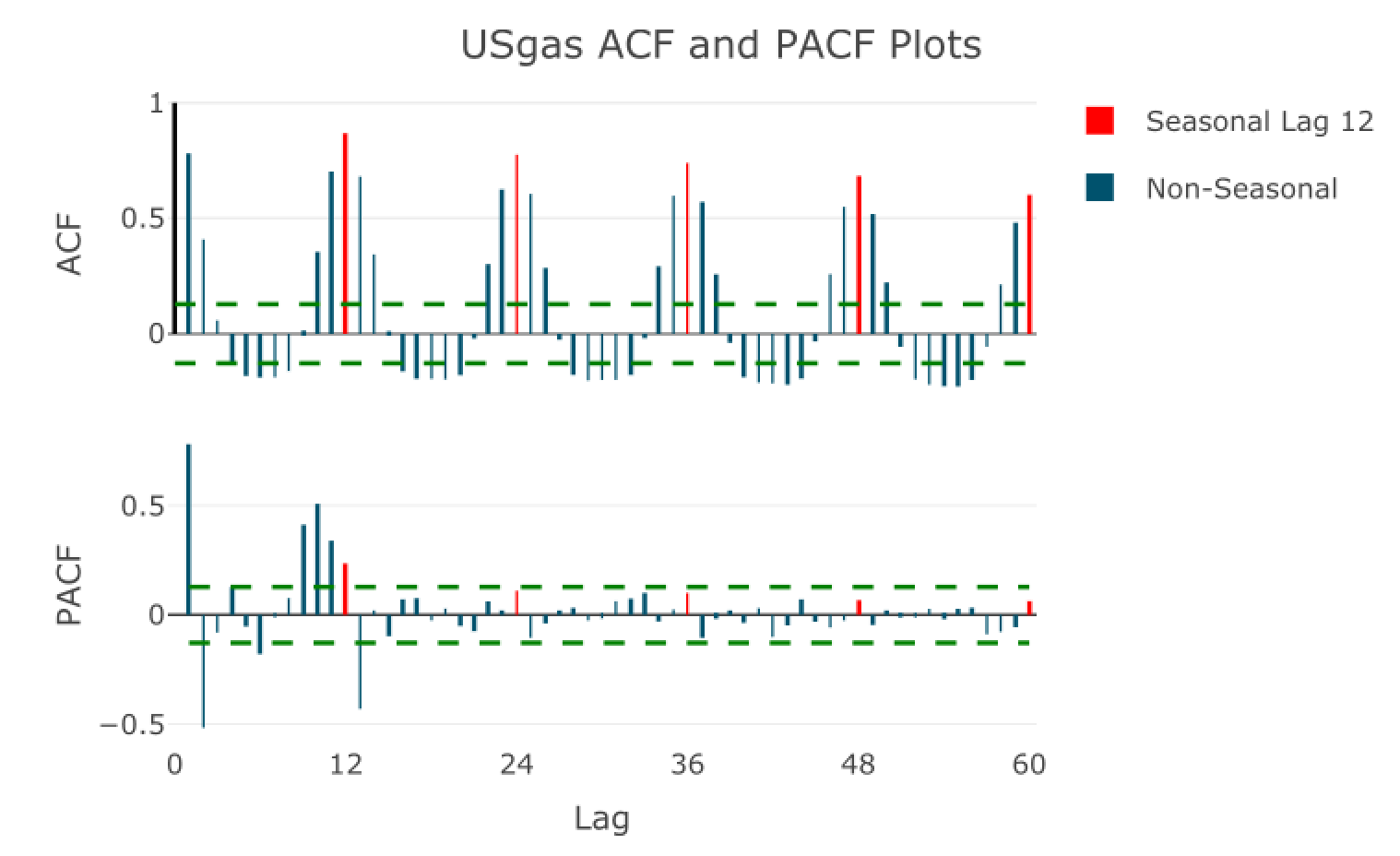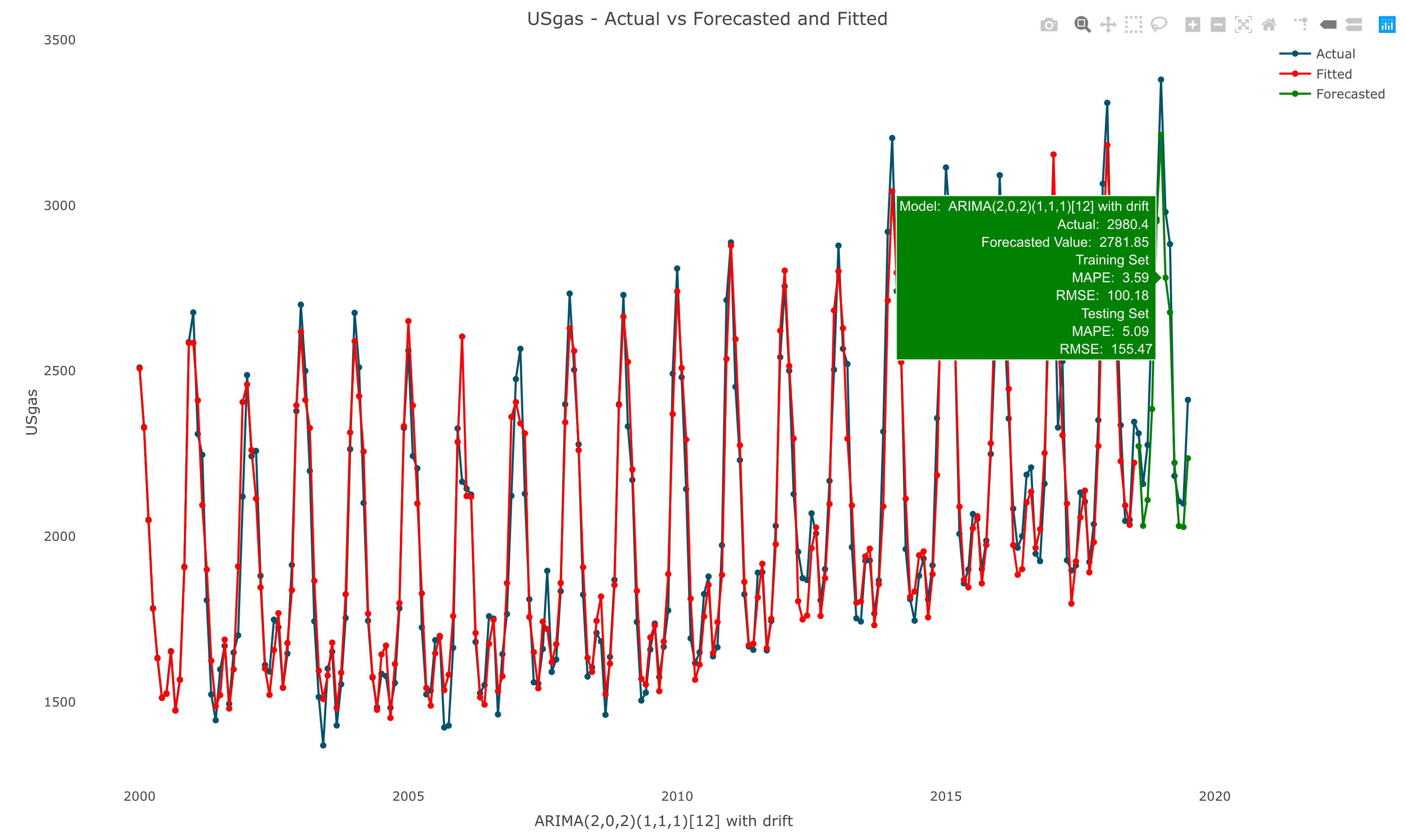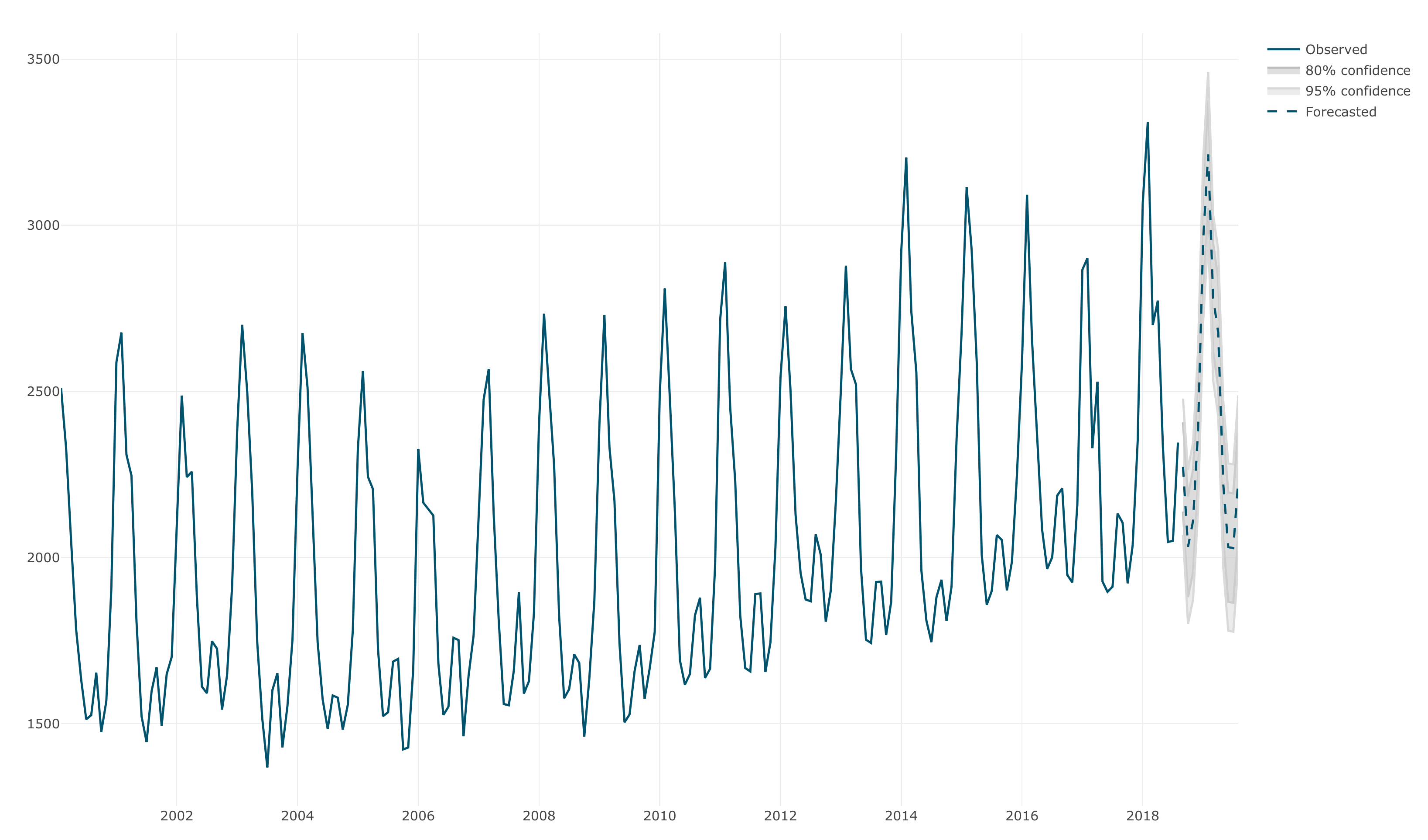The TSstudio package provides a set of tools descriptive and predictive analysis of time series data. That includes utility functions for preprocessing time series data, interactive visualization functions based on the plotly package engine, and set of tools for training and evaluating time series forecasting models from the forecast, forecastHybrid, and bsts packages.
More information available on the package vignettes.
Install the stable version from CRAN:
install.packages("TSstudio")or install the development version from Github:
# install.packages("devtools")
devtools::install_github("RamiKrispin/TSstudio")library(TSstudio)
data(USgas)
# Ploting time series object
ts_plot(USgas,
title = "US Monthly Natural Gas Consumption",
Ytitle = "Billion Cubic Feet")# Seasonal plot
ts_seasonal(USgas, type = "all")# Heatmap plot
ts_heatmap(USgas)# ACF and PACF plots
ts_cor(USgas, lag.max = 60)# Lags plot
ts_lags(USgas, lags = 1:12)# Seasonal lags plot
ts_lags(USgas, lags = c(12, 24, 36, 48))# Forecasting applications
# Setting training and testing partitions
USgas_s <- ts_split(ts.obj = USgas, sample.out = 12)
train <- USgas_s$train
test <- USgas_s$test
# Forecasting with auto.arima
library(forecast)
md <- auto.arima(train)
fc <- forecast(md, h = 12)
# Plotting actual vs. fitted and forecasted
test_forecast(actual = USgas, forecast.obj = fc, test = test)# Plotting the forecast
plot_forecast(fc)# Run horse race between multiple models
methods <- list(ets1 = list(method = "ets",
method_arg = list(opt.crit = "lik"),
notes = "ETS model with opt.crit = lik"),
ets2 = list(method = "ets",
method_arg = list(opt.crit = "amse"),
notes = "ETS model with opt.crit = amse"),
arima1 = list(method = "arima",
method_arg = list(order = c(2,1,0)),
notes = "ARIMA(2,1,0)"),
arima2 = list(method = "arima",
method_arg = list(order = c(2,1,2),
seasonal = list(order = c(1,1,1))),
notes = "SARIMA(2,1,2)(1,1,1)"),
hw = list(method = "HoltWinters",
method_arg = NULL,
notes = "HoltWinters Model"),
tslm = list(method = "tslm",
method_arg = list(formula = input ~ trend + season),
notes = "tslm model with trend and seasonal components"))
# Training the models with backtesting
md <- train_model(input = USgas,
methods = methods,
train_method = list(partitions = 6,
sample.out = 12,
space = 3),
horizon = 12,
error = "MAPE")
# A tibble: 6 x 7
model_id model notes avg_mape avg_rmse `avg_coverage_80%` `avg_coverage_95%`
<chr> <chr> <chr> <dbl> <dbl> <dbl> <dbl>
1 arima2 arima SARIMA(2,1,2)(1,1,1) 0.0557 167. 0.583 0.806
2 hw HoltWinters HoltWinters Model 0.0563 163. 0.736 0.889
3 ets1 ets ETS model with opt.crit = lik 0.0611 172. 0.681 0.903
4 ets2 ets ETS model with opt.crit = amse 0.0666 186. 0.458 0.833
5 tslm tslm tslm model with trend and seasonal components 0.0767 220. 0.417 0.667
6 arima1 arima ARIMA(2,1,0) 0.188 598. 0.875 0.958
# Plot the performance of the different models on the testing partitions
plot_model(md)# Holt-Winters tunning parameters with grid search
hw_grid <- ts_grid(USgas,
model = "HoltWinters",
periods = 6,
window_space = 6,
window_test = 12,
hyper_params = list(alpha = seq(0,1,0.1),
beta = seq(0,1,0.1),
gamma = seq(0,1,0.1)))
plot_grid(hw_grid, type = "3D")











